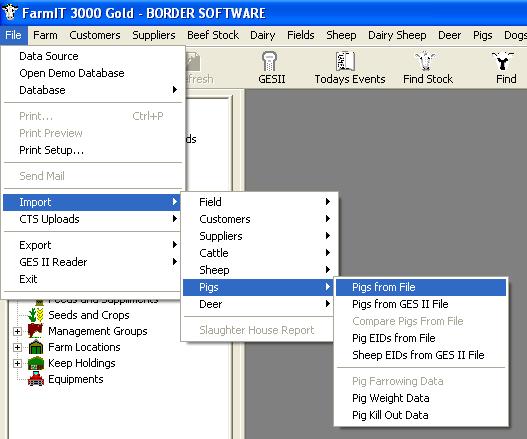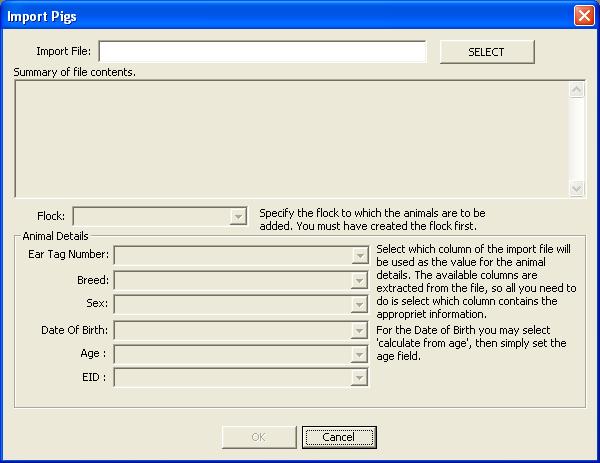Importing Pigs from a file.
You can import pigs from a file in the same way as
you can import sheep from a file, such as an excel spread sheet saved as a
comma separated list.
A comma separated list is nothing more than a simple text file
containing a list of values which are separated by commas. For example a list of
sheep may be represented as follows
EarTagNumber, Breed, Sex, DOB, Age,
UK32231100001, Welsh
Speckled Face, EWE, 12/04/1998, 5
UK32231100002, Welsh Speckled Face, EWE,
14/04/1998, 5
UK32231100003, Welsh Speckled Face, EWE, 17/04/1998,
5
UK32231100101, Welsh Speckled Face, EWE, 10/04/1999, 4
UK32231100102,
Welsh Speckled Face, EWE, 22/04/1999, 4
UK32231100203, Welsh Speckled Face,
EWE, 12/04/2000, 3
UK32231100205, Welsh Speckled Face, EWE, 12/04/2000, 3
For those of you that do have a list of your pigs, their ear tag
number, breed, sex and either date of birth or year of birth, we can then setup
your records in seconds.
If you do not have a computerised list then creating a simple text file is
not difficult and can be done using Microsoft Windows Notepad for example, if you
find even this to difficult we will be quite happy to produce a file (for a
small fee) if you can supply us with a faxed list of animal details.
Once created we can easily import the deer and generate their
individual records.
To import a file select the import pigs from file option from the
main file menu.

The Import Pigs window is then displayed.

Select the file you wish to import, the file will be
automatically scanned for columns and the results displayed. You may then select which
columns are to be mapped to the animal fields and finally import the pigs by selecting
'OK'. A report of the import will be generated.
N.B. Pigs are not added to a flock so this function is disabled in
this window.